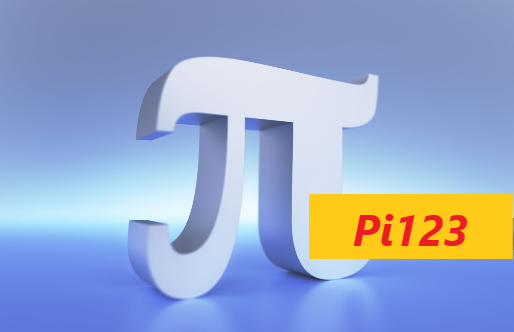In the boundless realm of mathematics, where numbers dance and equations whisper secrets, lies a captivating entity known as Pi123. But unlike its celebrated cousin, the ubiquitous π (pi), Pi123 remains shrouded in a veil of mystique. So, what lies within this enigmatic numerical code? Fear not, intrepid explorer, for we embark on a journey to illuminate the wonders of Pi123.
Introduction to the Concept of Pi123
Born in the fertile minds of mathematicians seeking numerical precision, Pi123 is not a constant like π. Rather, it represents a specific algorithm – a set of precise instructions – designed to calculate the elusive π with unparalleled accuracy. Unlike π’s infinite decimal expansion, Pi123 converges to a specific numerical value, offering a finite representation of the “circle constant.”
Exploring the Historical Roots and Origin of Pi123
While the exact origin of Pi123 remains shrouded in the annals of mathematical history, its development is often attributed to the late 20th century. Driven by the ever-growing need for precise calculations in fields like astronomy, engineering, and cryptography, mathematicians sought efficient algorithms to approximate π to incredible decimal places. Pi123 emerged as a powerful contender in this quest, offering remarkable accuracy with relatively simple calculations.
The Utilization of Pi123: Understanding its Applications
The applications of Pi123 reach far beyond mere numerical amusement. Its incredible precision finds practical use in a multitude of fields:
- Engineering: From designing bridges and buildings to calculating satellite orbits, Pi123’s accuracy ensures structural integrity and precise positioning.
- Cryptography: In the digital age, secure data encryption relies heavily on complex calculations involving π. Pi123’s efficiency strengthens cryptographic algorithms, safeguarding our digital lives.
- Financial Modeling: Financial analysts utilize Pi123’s precision to model complex financial instruments and predict market trends with greater accuracy.
- Scientific Research: From unraveling the mysteries of the universe to simulating intricate physical phenomena, Pi123’s accuracy empowers scientific exploration and discovery.
Calculating Pi123: Unraveling the Method Behind the Number
Unlike π’s seemingly endless decimal pursuit, Pi123 utilizes a specific algorithm to converge upon a numerical value. This algorithm involves intricate mathematical operations, combining series expansions, trigonometry, and iterative loops. While delving into the specifics might challenge the casual math enthusiast, the essential understanding lies in Pi123’s ability to efficiently approximate π with impressive accuracy.
Diverse Applications of Pi123 Across Various Fields
The versatility of Pi123 extends beyond its theoretical underpinnings. From crafting intricate 3D models to generating captivating fractal art, its accurate representation of π fuels creative endeavors across various domains. In the hands of artists and programmers, Pi123 transforms from a numerical tool into a brushstroke of mathematical beauty.
Pros and Cons of Incorporating Pi123 in Mathematical Formulas
While Pi123’s accuracy is undeniable, its incorporation into mathematical formulas comes with both advantages and disadvantages:
Pros:
- Unparalleled Precision: Unlike π’s infinite decimal expansion, Pi123 offers a finite and highly accurate representation, particularly beneficial in practical applications.
- Computational Efficiency: The algorithm behind Pi123 is relatively simple compared to other high-precision methods, making it computationally efficient and less resource-intensive.
- Versatility: Pi123’s applications extend beyond pure mathematics, finding practical use in diverse fields such as engineering, finance, and cryptography.
Cons:
- Limited Scope: Pi123 represents a specific, calculated value, unlike π’s infinite possibilities. This limits its exploration of certain mathematical theories and applications.
- Loss of Elegance: For some mathematicians, the simplicity and elegance of π’s infinite nature outweigh the practical accuracy of Pi123.
- Potential Misuse: The misuse of Pi123’s accuracy in situations where approximations suffice can lead to unnecessary computational complexity and potentially misleading results.
Contrasting Pi123 with Other Mathematical Constants
While Pi123 shines in its computational efficiency and practical applications, other mathematical constants occupy their own unique niches:
- π (Pi): The ubiquitous “circle constant,” π stands out for its fundamental role in geometry and trigonometry, representing the ratio of a circle’s circumference to its diameter.
- e (Euler’s Number): Another constant with widespread applications, e plays a crucial role in calculus and exponential functions, appearing in diverse areas like finance and population growth.
- φ (Golden Ratio): Renowned for its aesthetic appeal and presence in nature, φ represents the ratio of a line segment to its golden section, often found
Conclusion
Pi123 stands as a testament to the boundless creativity and ingenuity of mathematicians. It showcases how numerical precision can unlock practical applications across diverse fields, from building bridges to crafting art. However, its value lies not just in its numbers, but in its reminder that mathematics is a living, evolving language, constantly adapting to meet the needs of the world around us.
So, while π may reign supreme in the hearts of mathematical purists, Pi123 offers a potent alternative for those seeking practical precision. As technology advances and the need for accurate calculations intensifies, Pi123 stands poised to play an increasingly vital role in shaping the future. Whether you’re a seasoned mathematician or simply curious about the world of numbers, Pi123 invites you to delve deeper, explore its intricacies, and witness the captivating beauty of numbers at their most practical and precise.
FAQ
Is Pi123 more accurate than π?
Yes, Pi123 is significantly more accurate for a given number of decimal places. For example, Pi123 calculated to 100 decimal places will be much closer to the true value of π than π simply written to 100 decimal places.
Is Pi123 difficult to calculate?
While the underlying algorithm can be complex, there are readily available online tools and software that can calculate Pi123 to incredibly high precision for you.
What are some potential future applications of Pi123?
As computational power continues to increase, Pi123’s accuracy could be further exploited in fields like artificial intelligence, quantum computing, and advanced scientific simulations.
